Antifungals are used to treat mycosis, or infections caused by fungi. Fungi are different from bacteria in the sense that their cell walls are made up of chitin and various polysaccharides rendering these organisms resistant to antibiotics.
There is an increased incidence of fungal infections in immunocompromised patients (e.g., patients with AIDS, those taking immunosuppressants like organ transplant recipients, etc.).
Antifungals can be systemic and/or topical.
- Systemic antifungals are used to treat systemic mycoses and can be toxic to the host and not to be used indiscriminately. It is important to get a culture of the fungus causing the infection to ensure that the right drug is being used so that the patient is not put at additional risk from the toxic adverse effects associated with these drugs.
- Topical antifungals are used to treat a variety of mycoses of skin and mucous membranes. Some systemic antifungals have topical forms.
Antifungals: Generic and Brand Names
Here is a table of commonly encountered antifungals, their generic names, and brand names:
- Systemic Antifungals
- Azole Antifungals
- fluconazole (Diflucan)
- itraconazole (Sporanox)
- ketoconazole (Nizoral, Xolegel)
- terbinafine (Lamisil)
- voriconazole (VFend)
- Echinocandin Antifungals
- anidulafungin (Eraxis)
- caspofungin acetate (Cancidas)
- micafungin (Mycamine)
- Other systemic antifungals
- amphotericin B ( Abelcet, Amphotec)
- flucytosine (Ancobon)
- griseofulvin
- nystatin (Mycostatin, Nilstat)
- Azole Antifungals
- Topical Antifungals
- Azole Topical Antifungals
- butoconazole (Gynazole I)
- clotrimazole (lotrimin, Mycelex)
- ketoconazole (Extina, Xolegel)
- miconazole (Monistat, Fungoid)
- oxiconazole (Oxistat)
- sertaconazole nitrate (Ertaczo)
- sulfonazole (Exelderm)
- terbinafine (Lamisil)
- terconazole (Terazol)
- tioconazole (Monistat-1, Vagistat-1)
- Other topical antifungals
- ciclopirox (Loprox, Penlac Nail Lacquer)
- gentian violet
- naftifine (Naftin)
- tolnaftate (Aftate, Tinactin)
- undecylenic acid (Cruex, Desenex)
- Azole Topical Antifungals
Azole Antifungals
Azoles are antifungals used to treat systemic and topical fungal infections. They are less-toxic compared to other antifungals but they may also be less effective.
Therapeutic Action
The desired and beneficial action of azoles is:
- Either binding to sterols and cause cell death or interfering with cell replication.
- Ketoconazole, fluconazole, and itraconazole block the activity of a sterol in a fungal wall. Therefore, they may also block the activity of human steroids such as testosterone and cortisol.
- Posaconazole, a new drug, inhibit the synthesis of ergosterol leading to inability of the fungus to form cell wall.
- Terbinafine blocks the formation of ergosterol.
Indications
Azoles are indicated for the following medical conditions:
- Treatment for candidiasis, cryptococcal meningitis, systemic mycoses, aspergillosis, among others.
Here are some important aspects to remember for indication of antifungals in different age groups:
Children
- This population is more sensitive to the effects of antifungals so more severe adverse reactions may be expected from them.
- Only fluconazole, ketoconazole, terbinafine, and griseofulvin have established pediatric doses.
- Topical agents are avoided on open or draining areas to avoid systemic absorption. Also, occlusive dressings, including tight diapers, should be avoided over the affected areas.
Adults
- This age group widely use over-the-counter antifungals and it should be emphasized to them that antifungals can be very toxic so usage is only justified when causative organism is identified.
- Pregnant and lactating women should be advised that usage of this drug should only be in situations where the benefits clearly outweigh the risks.
- As for women of childbearing age, barrier contraceptives should be employed. Lastly, antifungals should not be used over open or draining areas as this can facilitate systemic absorption.
Older adults
- They are more susceptible to the adverse effects of the drug, especially those with hepatic and renal dysfunction. In such cases, doses are needed to be lowered.
Pharmacokinetics
Here are the characteristic interactions of azoles and the body in terms of absorption, distribution, metabolism, and excretion:
| Route | Onset | Peak | Duration |
|---|---|---|---|
| Oral | Slow | 1-2 h | 2-4 d |
| IV | Rapid | 1 h | 2-4 d |
Contraindications and Cautions
The following are contraindications and cautions for the use of azoles:
- Hepatic dysfunction. Ketoconazole, fluconazole, posaconazole, and terbinafine can cause serious hepatic toxicity. Patients are carefully monitored for bone marrow suppression and GI and liver toxicity if using these drugs, particularly posaconazole.
- Endocrine or fertility problems. Ketoconazole is absolutely contraindicated in patients with this condition because of its effects on these processes. Fluconazole can be the alternative drug but it can cause liver and/or renal toxicity. Caution is exercised.
- Pregnancy and lactation. Not known whether most azoles cross placenta or enter breastmilk. However, terbinafine is known to do so.
- Patients taking drugs that can prolong QTc interval. Voriconazole and these drugs can worsen condition and can cause ergotism if taken with ergot alkaloids.
Adverse Effects
Use of azoles may result to these adverse effects:
- GI: liver toxicity
- Severe effects on a fetus or a nursing babies
Interactions
The following are drug-drug interactions involved in the use of azoles:
- Cyclosporine, digoxin, oral hypoglycemics, warfarin, oral anticoagulants, phenytoin: increased serum levels of these drugs when ketoconazole and fluoconazole are also being taken by the patient. The two drugs strongly inhibit CYP450 enzyme system.
- Statins, triazolam, midazolam, pimozide, dofetilide: serious cardiac effects together with itraconazole
- Ergot alkaloids: ergotism if taken with posaconazole and voriconazole
Echinocandin Antifungals
Echinocandin antifungals include anidulafungin, caspofungin, and micafungin.
Therapeutic Action
The desired and beneficial action of echinocandin antifungals is:
- Inhibiting glucan synthesis. Glucan is an enzyme that is present in the fungal cell wall but not in human cell walls. Fungal cell wall cannot be formed if glucan is destroyed.
Indications
Echinocandin antifungals are indicated for the following medical conditions:
- Treatment of candidemia and other forms of Candida infection
- Treatment of invasive aspergillosis in patients who do not respond or are intolerant to other therapies
- Prophylaxis of Candida infections in patients with hematopoietic stem cell transplant
Pharmacokinetics
Here are the characteristic interactions of azoles and the body in terms of absorption, distribution, metabolism, and excretion:
Anidulafungin
| Route | Onset | Peak | Duration |
|---|---|---|---|
| Anidulafungin IV | Rapid | N/A | N/A |
Caspofungin
| Route | Onset | Peak | Duration |
|---|---|---|---|
| Caspofungin IV | Rapid | N/A | N/A |
Micafungin
| Route | Onset | Peak | Duration |
|---|---|---|---|
| Micafungin IV | Rapid | N/A | N/A |
Contraindications and Cautions
The following are contraindications and cautions for the use of echinocandin antifungals:
- Anidulafungin. May cross placenta and enter breastmilk. Caution is also used in the presence of hepatic impairment.
- Caspofungin. It is embryotoxic in animal studies and known to enter breast milk.
- Micafungin. Should only be used in pregnant and lactating patients if benefits clearly outweigh the risks.
Adverse Effects
Use of echinocandin antifungals may result to these adverse effects:
- GI: hepatic toxicity
- Serious hypersensitivity reactions, particularly with micafungin
- Immunological: bone marrow depression
Interactions
The following is drug-drug interaction involved in the use of echinocandin antifungals:
- Cyclosporine: concurrent use with caspofungin is contraindicated
Other Antifungal Agents
- Other antifungal agents include amphotericin B, flucytosine, griseofulvin, and nystatin.
Therapeutic Action
The desired and beneficial action of other antifungal agents are:
- Causing fungal cell death (fungicidal) and preventing fungal cell reproduction (fungistatic)
- Amphotericin B binds to sterols in the fungus cell wall, changing the cell wall permeability. It is a very potent drug with many unpleasant adverse effects.
- Flucytosine is a less toxic drug that alters the cell membrane of susceptible fungi, causing cell death. Griseofulvin acts in much the same way.
- Nystatin binds to sterols in the cell wall, changing permeability and allowing cellular component leakage.
Indications
Azoles are indicated for the following medical conditions:
- Treatment of progressive, potentially fatal infections due to many adverse effects
- Treatment of systemic infections caused by Candida or Cryptococcus
- Treatment of variety of tinea infections caused by Trichophyton spp.
Pharmacokinetics
Here are the characteristic interactions of other antifungals and the body in terms of absorption, distribution, metabolism, and excretion:
Amphotericin B and flucytosine
| Route | Onset | Peak | Duration |
|---|---|---|---|
| Amphotericin B and flucytosine IV | Rapid | 2 h for flucytosine | N/A |
| Half-life (T1/2) | Metabolism | Excretion |
|---|---|---|
| 24 h, then 15 days | not well understood | kidney (urine) |
Griseofulvin
| Route | Onset | Peak | Duration |
|---|---|---|---|
| Griseofulvin PO | N/A | 4 h | N/A |
Contraindications and Cautions
The following are contraindications and cautions for the use of other antifungals:
- Amphotericin B. Successfully used during pregnancy but caution must be used. This is contraindicated during lactation because it can cause potential risk to the neonate.
- Flucytosine. Extreme caution in patients with renal impairments. Toxicity can occur at 100 mcg/mL.
- Nystatin. Not be used during pregnancy and for lactating patients because effects are not known.
Adverse Effects
Use of other antifungals may result to these adverse effects:
- CNS: headache and mild CNS changes for griseofulvin
- GI and GU: hepatic and renal failure, nausea, vomiting, potentially severe diarrhea, anorexia, weight loss
- Immunological: bone marrow suppression, rash, dermatological changes
- Local: pain at injection site with phlebitis or thrombophlebitis
Interactions
The following are drug-drug interactions involved in the use of other antifungals:
- Nephrotoxic antibiotics, antineoplastics, cyclosporine, corticosteroids: not combined with amphotericin B because of inreased risk of severe renal toxicity
Nursing Considerations
Here are important nursing considerations when administering systemic antifungals:
Nursing Assessment
These are the important things the nurse should include in conducting assessment, history taking, and examination:
- Assess for the mentioned cautions and contraindications (e.g. known history of allergy to antifungals, liver and kidney dysfunction, pregnancy and lactation, etc.) to prevent any untoward complications.
- Perform a thorough physical assessment (other medications taken, orientation and reflexes, skin color and lesions, etc.) to establish baseline data before drug therapy begins, to determine effectiveness of therapy, and to evaluate for occurrence of any adverse effects associated with drug therapy.
- Obtain a culture of the infected area to make an accurate determination of the type and responsiveness of the fungus.
- Evaluate renal and hepatic function tests and complete blood count to determine baseline function of these organs and to assess possible toxicity during drug therapy.
Nursing Diagnoses
Here are some of the nursing diagnoses that can be formulated in the use of this drug for therapy:
- Acute pain related to GI, CNS, and local drug effects
- Disturbed sensory perception (kinesthetic) related to CNS effects
Implementation with Rationale
These are vital nursing interventions done in patients who are taking systemic antifungals:
- Check culture and sensitivity reports to ensure that this is the drug of choice for this patient.
- Ensure that patient receives full course of antifungals as prescribed (may take up to 6 months for chronic infection), to get the full beneficial effects.
- Monitor IV sites to ensure that phlebitis or infiltration does not occur.
- Provide safety measures (e.g.side rails and assistance with ambulation, antipyretics for fever and chills, temperature regulation for fever, etc.) to protect the patient if CNS effects (e.g. confusion, disorientation, numbness) occur.
- Provide small, frequent, nutritious meals if GI upset is severe. Monitor nutritional status and arrange a dietary consultation as needed to ensure nutritional status.
- Advise patient to report sore throat, unusual bruising or bleeding, or yellowing of eyes and skin, all of which could indicate hepatic toxicity; or severe nausea and vomiting, which could interfere with nutritional state and slow recovery.
- Educate client on drug therapy to promote understanding and compliance.
Evaluation
Here are aspects of care that should be evaluated to determine effectiveness of drug therapy:
- Monitor patient response to therapy (resolution of fungal infections).
- Monitor for adverse effects (e.g. orientation and affect, nutritional state, skin color and lesions, renal and hepatic function, etc).
- Evaluate patient understanding on drug therapy by asking patient to name the drug, its indication, and adverse effects to watch for.
- Monitor patient compliance to drug therapy.
Topical Antifungals
- Topical antifungals are used to treat a variety of mycoses of skin and mucous membranes. Some systemic antifungals have topical forms.
- Fungi causing these mycoses are called dermatophytes.
Therapeutic Action
The desired and beneficial action of topical antifungals is:
- Altering the cell permeability of the fungus, causing prevention of replication and fungal death.
Indication
Topical antifungals are indicated for the following medical conditions:
- Local treatment for mycoses, including tinea infections.
Pharmacokinetics
Topical antifungals are not absorbed systemically. Pharmacokinetics is unknown.
Contraindications and Cautions
The following are contraindications and cautions for the use of topical antifungals:
- Known allergy to topical antifungals.
- Econazole can cause intense, local burning, and irritation. Drug should be discontinued upon evidence of these manifestations.
- Gentian violet stains skin and clothing bright purple. It can also be very toxic so it should be applied near active lesion.
- Naftifine, oxiconazole, and sertaconazole should not be used for longer than 4 weeks due to the risk of adverse effects and possible emergency of resistant fungal strains. Sulconazole should not be used for longer than 6 weeks for the same reasons.
Adverse Effects
Use of topical antifungals may result to these adverse effects:
- Local: irritation, burning, rash, swelling
- GI: nausea, vomiting, hepatic dysfunction (especially when they are taken as suppository or troche)
- GU: urinary frequency, burning, change in sexual activity (related to local absorption in the vagina)
Nursing Considerations
Here are important nursing considerations when administering topical antifungals:
Nursing Assessment
These are the important things the nurse should include in conducting assessment, history taking, and examination:
- Assess for the mentioned cautions and contraindications (e.g. known history of allergy to antifungals) to prevent any untoward complications.
- Perform a thorough physical assessment (other medications taken, skin color, temperature, and lesions, etc.) to establish baseline data before drug therapy begins, to determine effectiveness of therapy, and to evaluate for occurrence of any adverse effects associated with drug therapy.
- Obtain a culture of the infected area to make an accurate determination of the type and responsiveness of the fungus.
Nursing Diagnoses
Here is the nursing diagnosis that can be formulated in the use of this drug for therapy:
- Acute pain related to local drug effects
Implementation with Rationale
These are vital nursing interventions done in patients who are taking topical antifungals:
- Check culture and sensitivity reports to ensure that this is the drug of choice for this patient.
- Ensure that patient receives full course of antifungals as prescribed to get the full beneficial effects.
- Instruct patient in the correct method of administration, depending on the route, to improve effectiveness and decrease the risk of adverse effects.
- Troches should be dissolved slowly in the mouth.
- Vaginal suppositories, creams, and tablets should be inserted high into the vagina with the patient remaining recumbent for at least 10-15 minutes after insertion.
- Topical creams and lotions should be gently rubbed into the affected area after it has been cleansed with soap and water and patted dry. Occlusive bandages should be avoided.
- Advise patient to stop the drug if a severe rash occurs, especially if it is accompanied by blisters or if local irritation and pain are very severe. This development may indicate drug sensitivity or worsening of condition being treated.
- Educate client on drug therapy to promote understanding and compliance.
Evaluation
Here are aspects of care that should be evaluated to determine effectiveness of drug therapy:
- Monitor patient response to therapy (resolution of fungal infections).
- Monitor for adverse effects (e.g. rash, local irritation, burning, etc).
- Evaluate patient understanding on drug therapy by asking patient to name the drug, its indication, and adverse effects to watch for.
- Monitor patient compliance to drug therapy.
Recommended Resources
Our recommended nursing pharmacology resources and books:
Disclosure: Included below are affiliate links from Amazon at no additional cost from you. We may earn a small commission from your purchase which will help support us. Thank you! For more information, check out our privacy policy.
Pharm Phlash! Pharmacology Flash Cards #1 BEST SELLER!
Test-yourself review cards put critical clinical information for nearly 400 of the top generic medications at your fingertips. And, you can count on them for accuracy, because each card is based on content from Davis’s Drug Guide for Nurses. Increase your test scores in pharmacology class.
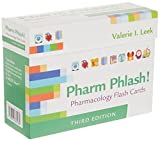
Focus on Pharmacology (8th Edition)
Focus on Nursing Pharmacology makes challenging concepts more approachable. Engaging learning features cultivate your clinical application, critical thinking and patient education capabilities. This updated 8th edition builds on your knowledge of physiology, chemistry and nursing fundamentals to help you conceptualize need-to-know information about each group of drugs.

Pharmacology Made Incredibly Easy (Incredibly Easy! Series®)
Nursing pharmacology guide offers step-by-step guidance so you can grasp the fundamentals in enjoyable Incredibly Easy style. This is the perfect supplement to class materials, offering solid preparation for NCLEX® as well as a handy refresher for experienced nurses. Colorfully illustrated chapters offer clear, concise descriptions of crucial nursing pharmacology concepts and procedures.

Lehne’s Pharmacology for Nursing Care (11th Edition)
The Eleventh Edition of Lehne’s Pharmacology for Nursing Care provides a thorough understanding of key drugs and their implications for nursing care. This text, written by renowned nursing educators, helps you comprehend and apply pharmacology principles. A clear and engaging writing style simplifies complex concepts, making even the most challenging pharmacology content enjoyable. We recommend this book if you want a comprehensive nursing pharmacology guide.
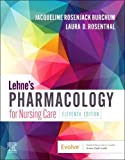
Nursing Drug Handbook
Nursing2023 Drug Handbook delivers evidence-based, nursing-focused drug monographs for nearly 3700 generic, brand-name, and combination drugs. With a tabbed, alphabetical organization and a “New Drugs” section, NDH2023 makes it easy to check drug facts on the spot.

Pharmacology and the Nursing Process
The 10th edition of Pharmacology and the Nursing Process offers practical, user-friendly pharmacology information. The photo atlas contains over 100 unique illustrations and photographs depicting drug administration techniques. Updated drug content reflects the most recent FDA drug approvals, withdrawals, and therapeutic uses.

Mosby’s Pharmacology Memory NoteCards: Visual, Mnemonic, and Memory Aids for Nurses
The 6th edition of Mosby’s Pharmacology Memory NoteCards: Visual, Mnemonic, & Memory Aids for Nurses incorporates illustrations and humor to make studying easier and more enjoyable. This unique pharmacology review can be utilized as a spiral-bound notebook or as individual flashcards, making it ideal for mobile study.

See Also
Here are other nursing pharmacology study guides:
- Nursing Pharmacology – Study Guide for Nurses
Our collection of topics related to nursing pharmacology - Pharmacology Nursing Mnemonics & Tips
These nursing mnemonics aim to simplify the concepts of pharmacology through the use of a simple, concise guide. - Generic Drug Name Stems Cheat Sheet
Learn about these generic drug name stems to help you make sense of drugs easier! - Common Drugs and Their Antidotes
A guide to drug antidotes that nurses should be familiar about. - IV Fluids and Solutions Guide & Cheat Sheet
Get to know the different types of intravenous solutions or IV fluids in this guide and cheat sheet. - Drug Dosage Calculations NCLEX Practice Questions (100+ Items)
Care to take the challenge? This quiz aims to help students and registered nurses alike grasp and master the concepts of medication calculation.
We have a pill for that…
Drug Guides NEW!
Individual drug guides and nursing considerations for the most common medications used in nursing pharmacology:
- Acetaminophen (Tylenol)
- Aspirin
- Atorvastatin (Lipitor)
- Enoxaparin (Lovenox)
- Furosemide (Lasix)
- Gabapentin
- Hydromorphone (Dilaudid)
- Lisinopril
- Metoprolol
- Morphine
Gastrointestinal System Drugs
Respiratory System Drugs
- Antihistamines
- Bronchodilators and Antiasthmatics
- Decongestants
- Expectorants and Mucolytics
- Inhaled Steroids
- Lung Surfactants
Endocrine System Drugs
- Adrenocortical Agents
- Antidiabetic Agents
- Glucose-Elevating Agents
- Hypothalamic Agents
- Insulin
- Parathyroid Agents: Bisphosphonates, Calcitonins
- Pituitary Drugs
- Sulfonylureas
- Thyroid Agents
Autonomic Nervous System Drugs
- Adrenergic Agonists (Sympathomimetics)
- Adrenergic Antagonists (Sympatholytics)
- Anticholinergics (Parasympatholytics)
- Cholinergic Agonists (Parasympathomimetics)
Immune System Drugs
Chemotherapeutic Agents
- Anthelmintics
- Anti-Infective Drugs
- Antibiotics
- Antifungals
- Antineoplastic Agents
- Antiprotozoal Drugs
- Antiviral Drugs
Reproductive System Drugs
Nervous System Drugs
- Antidepressants
- Antiparkinsonism Drugs
- Antiseizure Drugs
- Anxiolytics and Hypnotic Drugs
- General and Local Anesthetics
- Muscle Relaxants
- Narcotics, Narcotic Agonists, and Antimigraine Agents
- Neuromuscular Junction Blocking Agents
- Psychotherapeutic Drugs
Cardiovascular System Drugs
References and Sources
References and sources for this pharmacology guide for Antifungals:
- Karch, A. M., & Karch. (2011). Focus on nursing pharmacology. Wolters Kluwer Health/Lippincott Williams & Wilkins. [Link]
- Katzung, B. G. (2017). Basic and clinical pharmacology. McGraw-Hill Education.
- Lehne, R. A., Moore, L. A., Crosby, L. J., & Hamilton, D. B. (2004). Pharmacology for nursing care.
- Smeltzer, S. C., & Bare, B. G. (1992). Brunner & Suddarth’s textbook of medical-surgical nursing. Philadelphia: JB Lippincott.



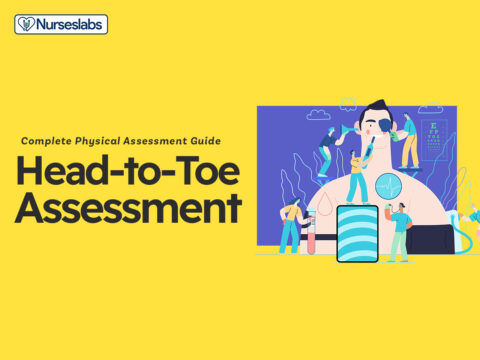





![Furosemide Nursing Considerations and Patient Teaching [Drug Guide]](https://nurseslabs.com/wp-content/uploads/2023/07/Furosemide-480x360.jpg)

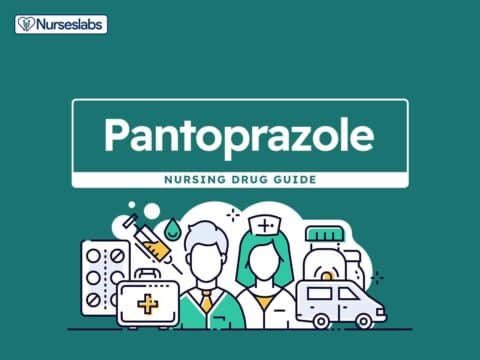
![Lisinopril Nursing Considerations and Patient Teaching [Drug Guide]](https://nurseslabs.com/wp-content/uploads/2023/03/Lisinopril-480x360.jpg)







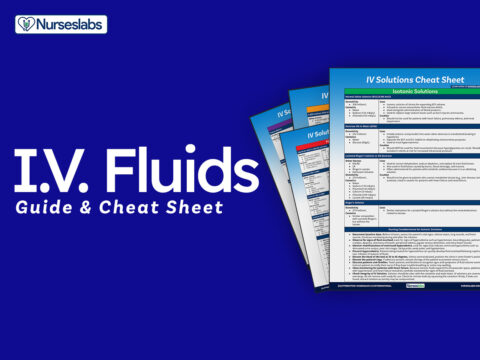

















Leave a Comment